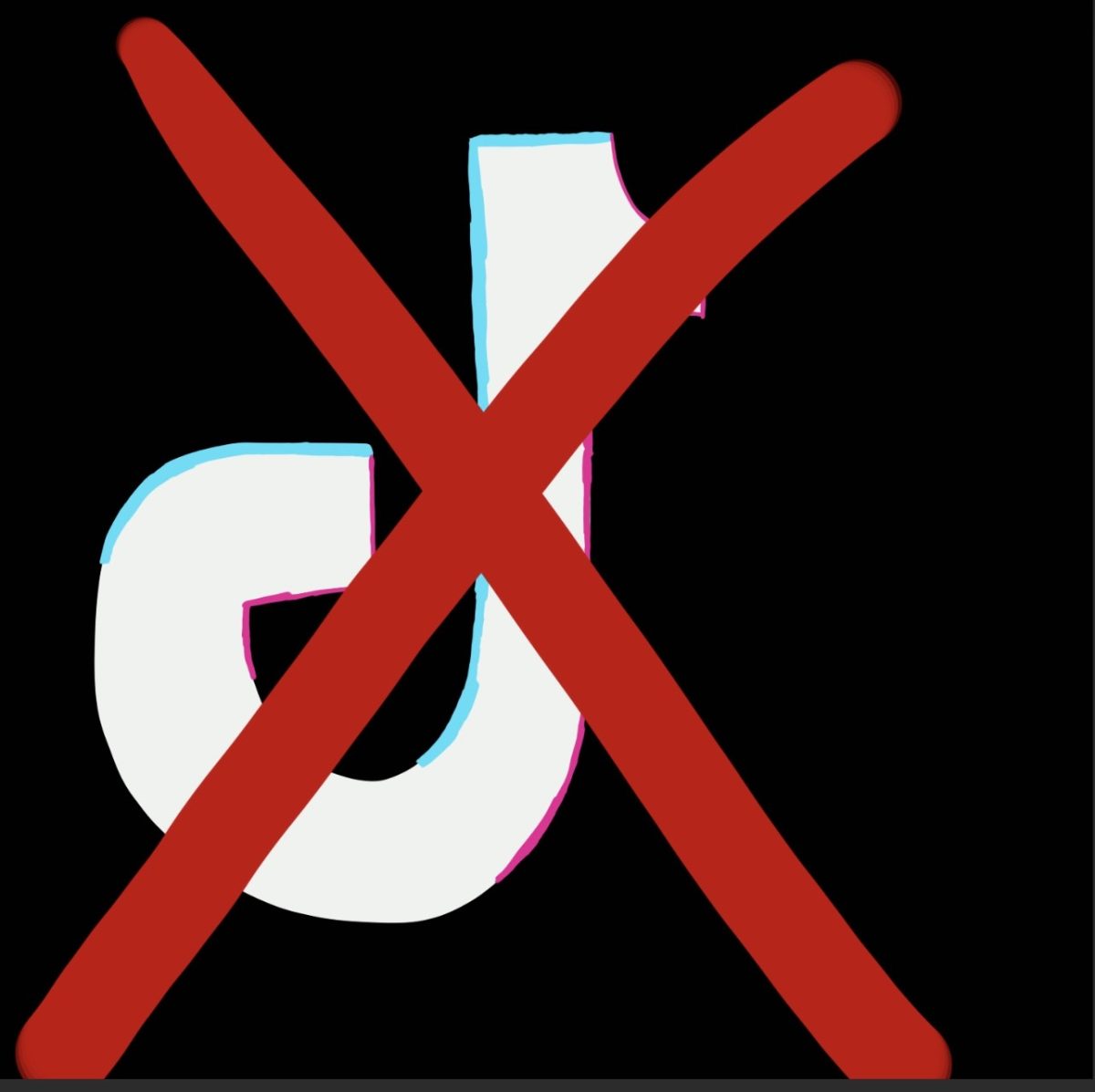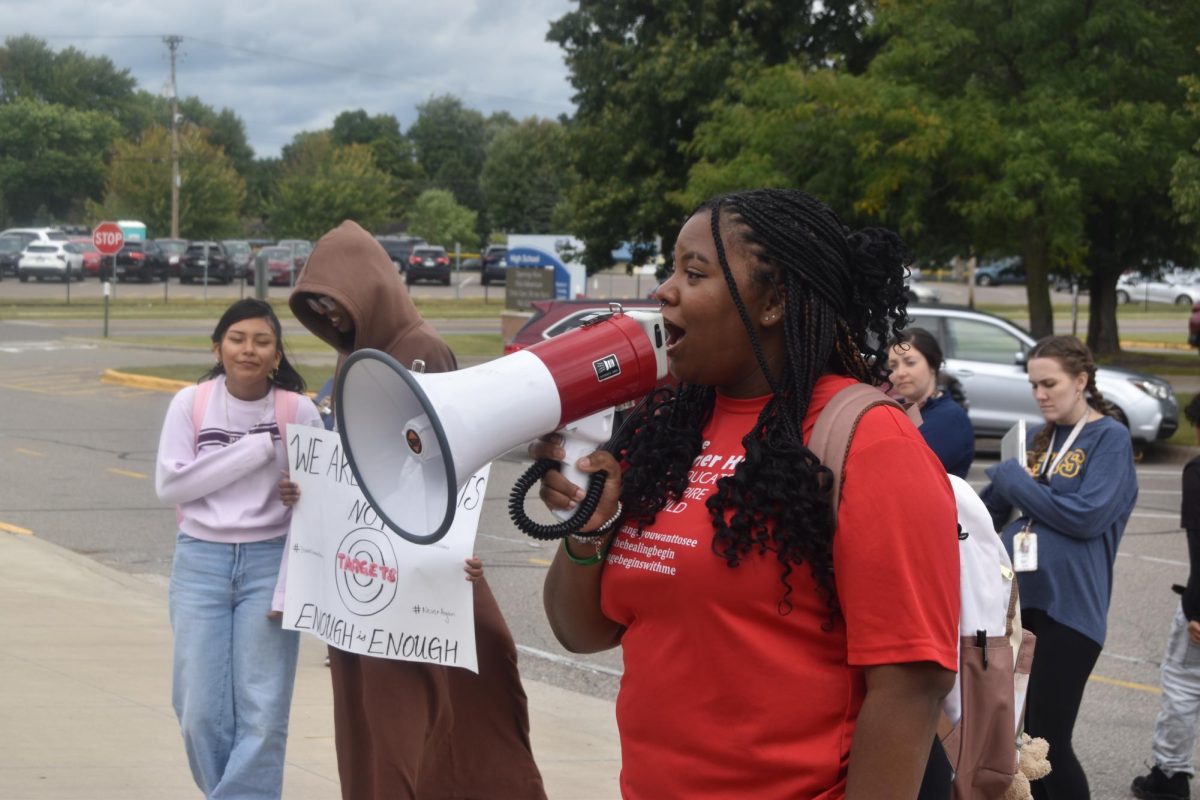What the heck happened with the popular social media app TikTok on January 18, and have there been any lasting effects since then? All across America, TikTok was banned due to national security concerns, only to be suddenly available again to users within hours. Both the enforced ban and its sudden lift caught so many people off guard. This day was a setback for many fans of the social media platform, especially content creators who depend on TikTok for income.
Formally known as Musically, TikTok arrived in the U.S. in 2018 as an app mostly for teens, but as social media usage grew, the app and its target demographic grew tenfold. TikTok is a place where you can watch funny, entertaining, educational or otherwise beneficial videos created by users around the globe. Your “For you page” (known informally as “FYP”) starts out as random videos recommended to you, but after you interact with a few videos, TikTok starts to use that information to personalize the page, hence its name.
In the days leading up to the ban, the U.S. Supreme Court held a hearing about the federally proposed TikTok ban with its parent company’s CEO, Shou Zi Chew of Bytedance. Chew and the Supreme Court talked about whether or not the app could potentially share U.S. user data with the Chinese government, a claim based on alleged affiliations between Bytedance’s Singaporean CEO and the Communist Party of China due to Bytedance’s Beijing-located headquarters. They discussed whether the app’s data collection violates U.S. laws, including the constitutional right to free speech, and whether banning the app would be beneficial to Americans and/or its economy.
TikTok and Bytedance sued the U.S. in May of last year, saying it was unconstitutional to ban the app, but then the FTC and DOJ sued them in response, stating that the app violates the Children’s Online Privacy Protection Act. This back-and-forth led to a stalemate, which resulted in the aforementioned public hearing in Washington, D.C.
As some may know, this isn’t the first time the U.S. government has stated that TikTok is getting “deleted”. Back in 2020, President Trump attempted to force the sale of the app through an executive order. At first, TikTok wasn’t going to sell the app or come to an agreement with Trump, but after some tough pressure, TikTok agreed to come together and protect U.S. data via American computer software company Oracle. In 2023, President Biden tried again but was only successful in banning the app from federal devices—until the near-end of his term this past January 18, where the ban went into premature effect for 12 hours before the newly elected Trump announced he’d delay the ban upon his inauguration the next week, thus making the app immediately available to users again.
“I think it’s dumb that they did all of that for nothing,” Nasra Farah (11) said. “ What the heck? It was literally gone for a night—not even 24 hours.”
Shortly before the ban, as it became more and more likely to actually happen, TikTok was a little hectic. People were afraid of losing their accounts that they had spent years building up. Others were wondering what social media platforms they could migrate to in order to continue being influencers or for their entertainment.
Many videos posted before the ban were about moving to RedNote, a social media app also based in China, known as Xiaohongshu overseas. When people were signing up just in case TikTok was banned, they said the app was similar to TikTok and could easily replace the TikTok app after some time adjusting. Instagram Reels was another place people from TikTok planned on going to since it’s an extension of an app they were more used to and could understand better than one largely used by non-English speakers.
The ban was said to happen on January 19, 2025, but on January 18, as it got closer to midnight, the app started shutting down across the U.S. If you were already scrolling through the app, it may not have shut down until the app was refreshed. Going onto users’ profiles during this time wasn’t great either; you could still see the video they had made, but if you clicked their profile, nothing but a blank page would show. When you reopened the app, you were met with a notification on TikTok telling you the app was no longer available and that the law banning it was active. People were deleting the app and overall upset and crying now that the app is gone. This is also when the shift of TikTok users moved over to RedNote, announcing on the new app that TikTok was gone and that RedNote was their new “home”. The ones who were already on RedNote, the majority of whom were Chinese, were welcoming and posted videos educating the new incomers on how things work on the app, what to do and not to do as well as teaching the Chinese language just so they can navigate a little better and be respectful of the online community.
After the ban happened officially on January 19, later that day, the app began reappearing in Apple’s App Store and Google Play. People who didn’t delete it were suddenly able to scroll, like and post videos again. TikTok gave users a notification welcoming the users back and because of Trump’s efforts, the app was available again in the U.S. Users’ “For you pages” were filled with hectic TikToks about the ban and what would happen next.
“I feel like the U.S. has much bigger issues such as economic concerns and the stock market crash and should focus on those rather than banning TikTok,” Vanessa Carlson (10) said. “I think the app is going to stay for a few years [at least]. Since TikTok [has] a large user base, it may be a while for it to [be banned] again.”
Trump’s delay of the ban expires on June 19, so while January’s scare may have been just a “warning” for TikTok and its users, if Bytedance doesn’t end up selling the app to someone from the U.S., it could become unavailable again. Maybe TikTok and the U.S. government can agree to keep TikTok up for Americans without a sale, but all we can do is wait and see what the future has in store for us and continue posting, liking and reposting in the meantime.









